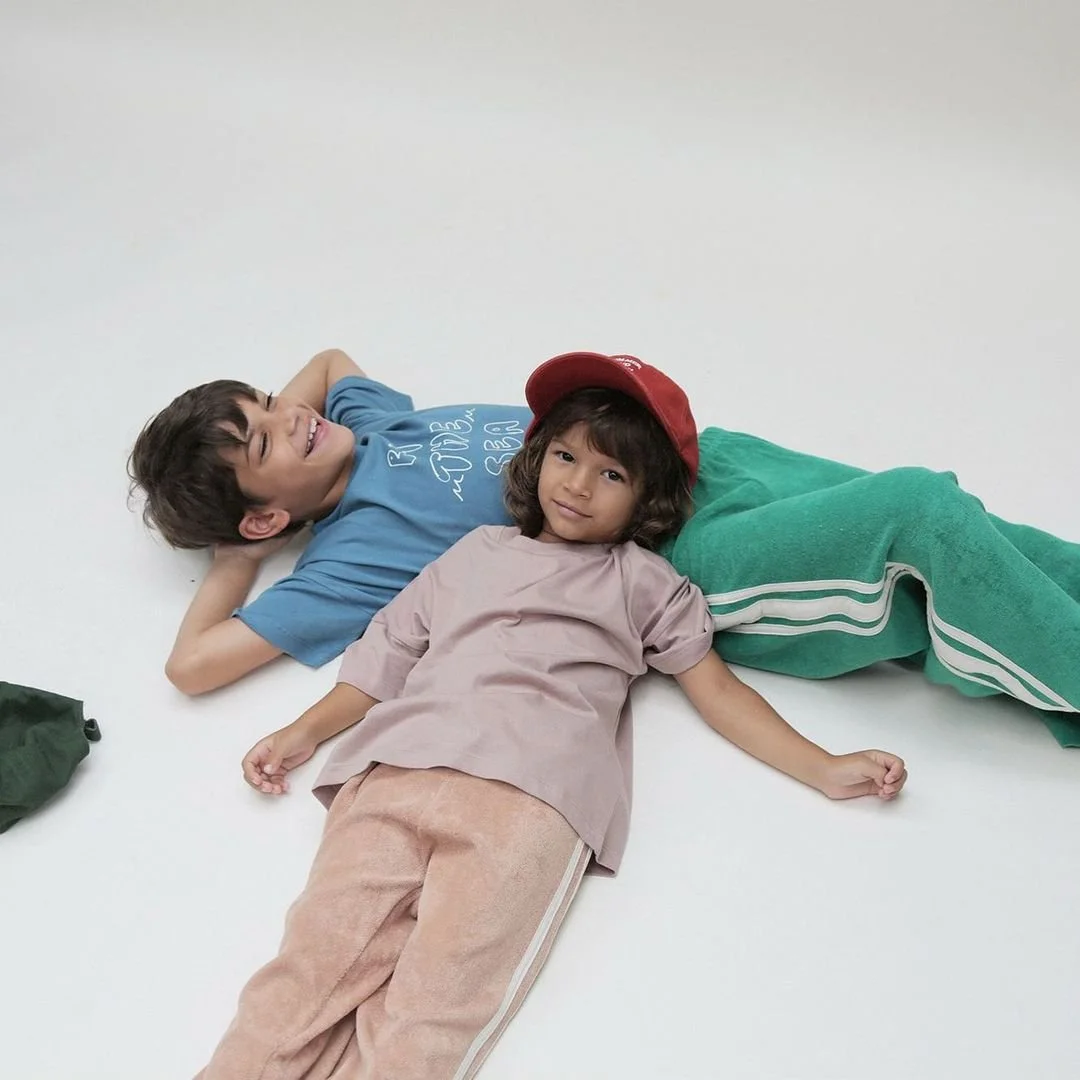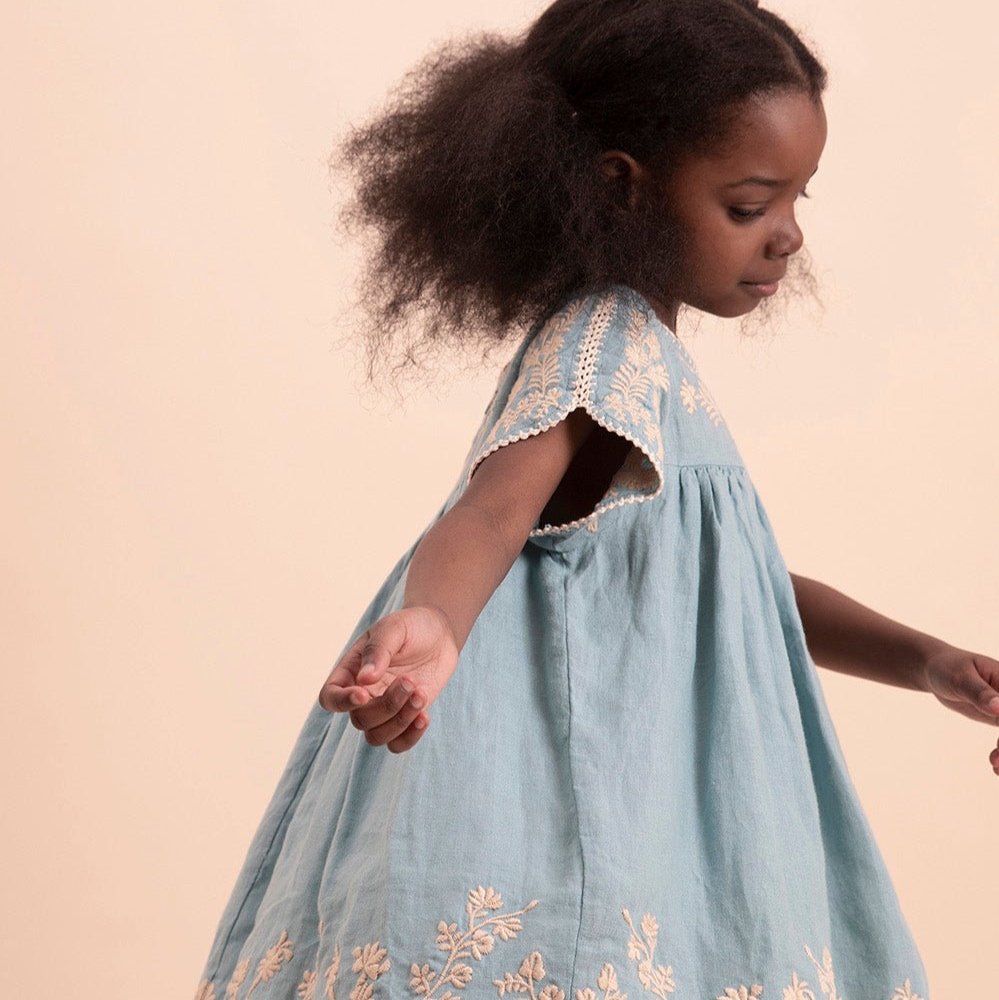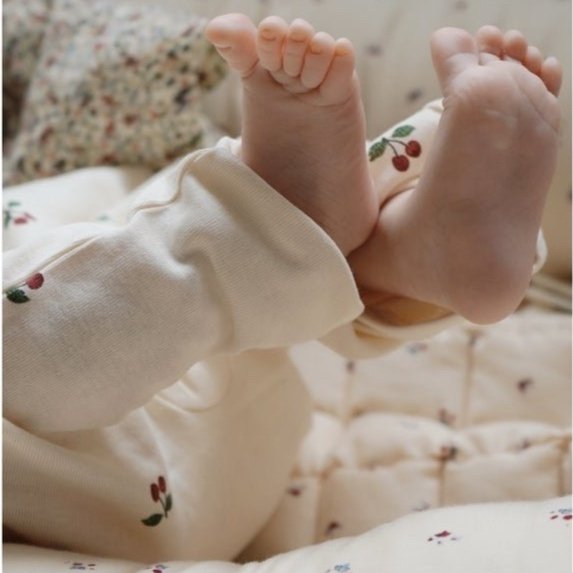Sustainability Q+A with Phil&Phae
Phil&Phae
INTERVIEW WITH BARBARA DE JONGE
FOUNDER, PHIL & PHAE
WHAT IS THE PHIL&PHAE ETHOS?
Next to using organic cotton and ethical production in Europe, we believe that sustainability also lies in design choices: creating timeless, well-made pieces that last beyond the seasons. Therefore our collections are designed to be transitional: the colour palettes are toughtfully composed in a way that current collection can easily be mixed with previous or next collections or with other brands. The models are kept rather simple, but with greatest attention to fit and details, making them 'special basics'. We hope that our designs will become your favourite wardrobe essentials, that will be worn endlessly... until they no longer fit and are passed down to a sibling.
WHERE ARE YOU BASED?
Netherlands.
WHERE ARE THE COLLECTIONS PRODUCED? ARE YOU ABLE TO CLOSELY MONITOR YOUR PRODUCTION?
In Europe (Istanbul and Porto). All suppliers we work with, we have met in person before we started working together. And I still pay regular visits to the factories. We talk to each other on a weekly or sometimes even daily base.
WHAT WAS YOU PROCESS IN SELECTING YOUR FACTORIES AND HOW DO YOU ENSURE YOUR MANUFACTURERS ARE MEETING BEST ETHICAL PRACTICES? DO THEY HAVE ANY CERTIFICATION?
As for ethical practices at suppliers: we made sure to work with suppliers that share our values: they are small family run businesses that focus on sustainable production. Some of them are certified (such as GOTS) which also guarantees good working conditions. For others of them, they are so small that they don't have certificates (which can be a costly process), but we are in very close contact with them, fully trust them and know that they provide good working conditions and are paying above minimum wage to their employees.
WHAT KIND OF FABRICS DO YOU MOST USE? ARE YOUR FABRICS GOTS ORGANIC OR OEKO-TEX CERTIFIED?
Our fabrics are made with certified organic cotton and the fabrics and trimmings are OEKO-TEX® 100 certified, which guarantees that they contain no harmful substances. However, you will not find a GOTS-logo in our garments, because we as a small business (and also some of the small family businesses we work with) do not have a GOTS-certification ourselves.
CAN YOU PLEASE TELL US ABOUT HOW YOUR FABRICS ARE DYED?
Yarns and fabrics are dyed according OEKO-TEX® 100 and REACH standards, which guarantees that they contain no harmful substances.
HOW DO YOU SELECT THE FABRICS YOU USE AND WHERE DO THEY COME FROM?
All our jerseys are especially knitted for us, they are custom made for us from locally grown organic cotton. The knitwear yarns are selected from the fabrics books of Portuguese and Italian mills.
WHAT DO YOU DO WITH YOUR OVERSTOCK OF MATERIALS AND FABRIC SCRAPS?
Each season we have a look at which fabrics have some leftovers, and then design some upcycled limited editions to consume these leftovers and scraps. Examples are newborn clothes, but also headbands and bonnets so even small scarps can be used. A part of the proceeds of these are donated to Solidaridad, an charity that is fighting for a fairer fashion chain in third world countries. We have also organized an online charity sale, where we sold overstock from past seasons and from which full profits were donated to Solidaridad.
CAN YOU PLEASE TELL US ABOUT YOUR PACKAGING FOR SHIPMENTS TO CUSTOMERS?
Yes, we use boxes from unbleached (kraft) carton and close the boxes with ecotape, made from kraft paper.
DO YOU USE INDIVIDUAL BAGS FOR INDIVIDUAL ITEMS WHEN YOU SHIP TO RETAILERS? IF YES, ARE THEY RECYCLED AND/OR COMPOSTABLE?
This is a project that we are working on, but unfortunately this is not as easy as it may sound without compromising on quality. Polybags are an important tool for us to make sure that the garments arrive neatly at the warehouse and then at the retailers, which helps prevent items ending up as damaged or second choice. So we cannot work without any bags at all. We have investigated oxydegradable bags, but after reading into this subject we have decided not to use those, because we are not convinced that these are the best option: oxydegradable plastic breaks down much quicker than 'normal' plastic at the presence of just air and dayllight, which sounds like a good thing, but t is not like the oxydegradable plastic literally dissapears. It just breaks down much much quicker, but in the end these tiny particles still end up in the environment. Therefore we are now looking into polybags that are certified recycled. We have not found a quality yet that is good enough to substitute our current polybags, but we will continue our search.
DO YOU USE RECYCLED PAPER FOR YOUR HANG TAGS, POSTCARDS AND MARKETING MATERIALS?
Paper for lookbooks etc is FSC, which means it comes from responsible sources. We cannot say that all the paper that we use is always recycled, but we choose the recycled option wherever available.
One year ago we have decided to sell our colour inkjet printer in order to minimize the use of paper during the design process. This way we force ourselves to do most of the designing on the computer screen, and only make printouts (externally at a copyshop) where absolutely necessary.
BACK TO BRAND PROFILE
Last updated October 2019










